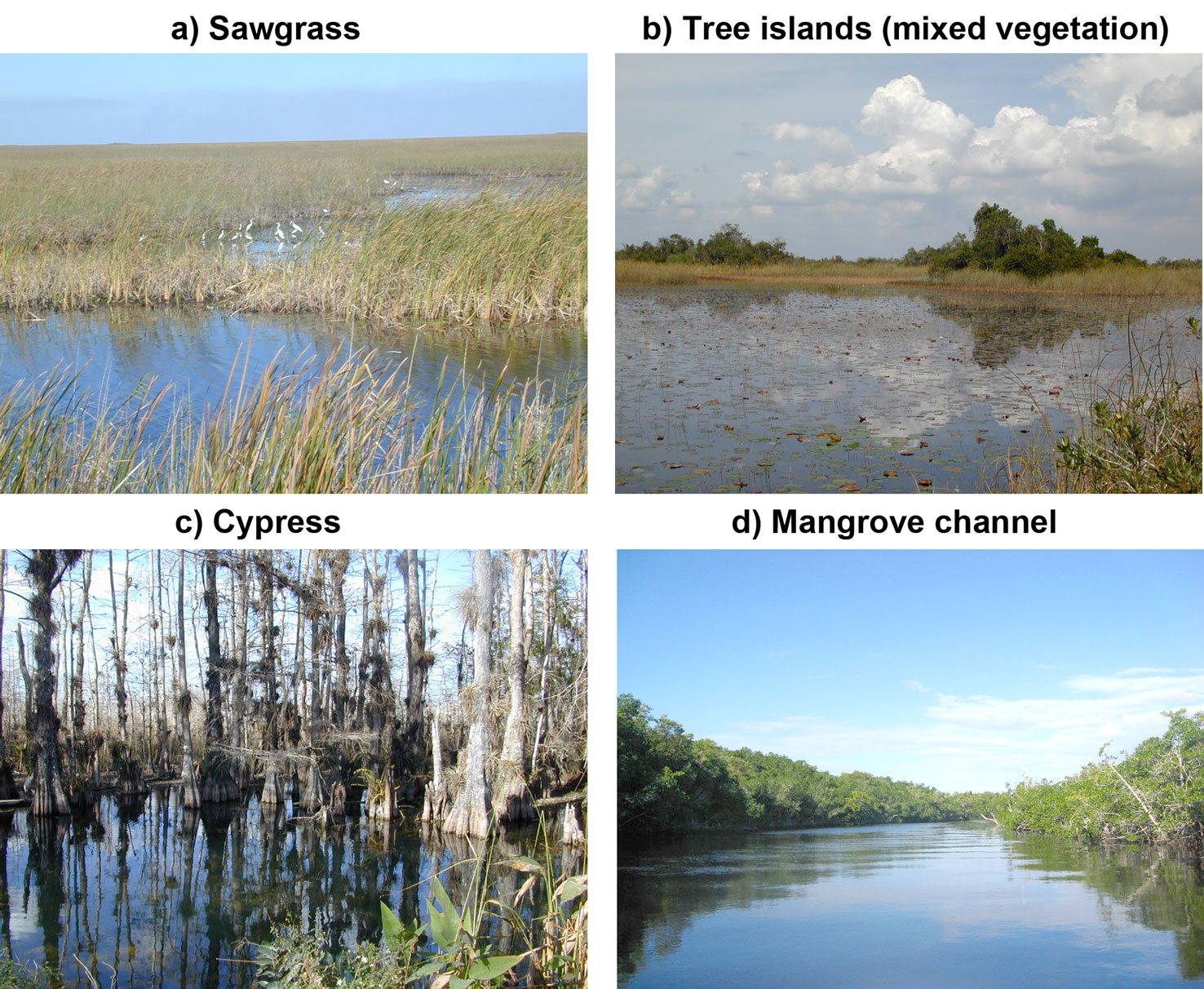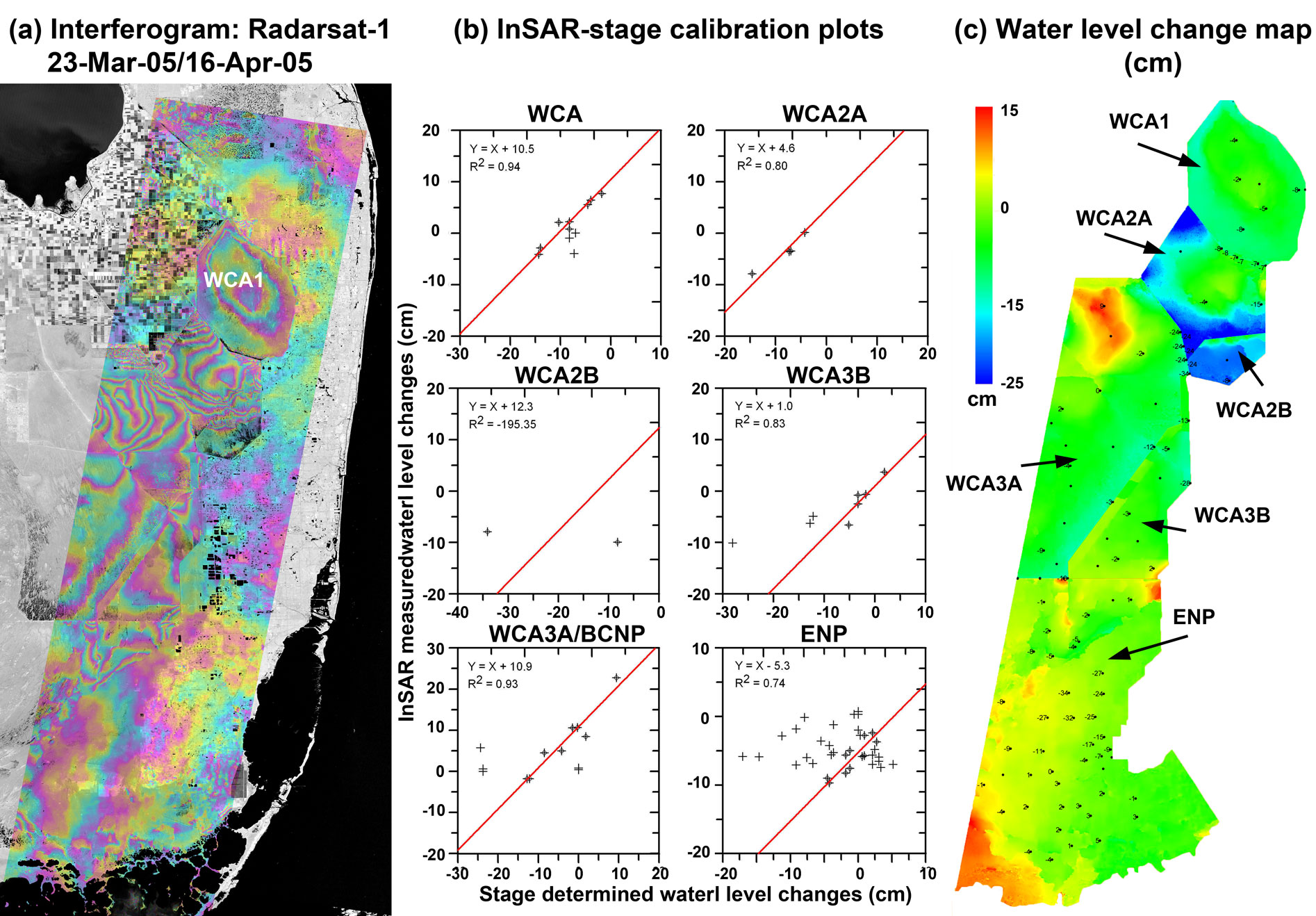Space-based wetland hydrology
Wetlands are transition zones, where water flow, nutrient cycling, and the Sun’s energy meet to produce unique and productive ecosystems. They provide critical habitats for a wide variety of plant and animal species, including the larval stages of many ocean fish. Wetlands also filter nutrients and pollutants from freshwater used by humans and provide aquatic habitats for outdoor recreation, tourism, and fishing. Globally, many such regions are under severe environmental stress, mainly from urban development, pollution, and rising sea level. However, there is increasing recognition of the importance of these habitats, and mitigation and restoration activities have begun in a few regions. A key element in wetlands conservation, management, and restoration involves monitoring its hydrologic system: the entire ecosystem depends on its water supply. In the past, hydrologic monitoring of wetlands was conducted almost exclusively by stage (water level) stations, which provide good temporal resolution, but suffer from low spatial resolution, as stage stations are typically distributed several, or even tens of kilometers, from each other.

Figure 1. Photographs of (a) freshwater herbaceous vegetation (saw grasses); (b) mixed vegetation—woody vegetation in the tree island and herbaceous around the islands—(c) freshwater woody vegetation (cypress); and (d) saltwater woody vegetation (mangroves) that grows along a tidal channel. [Source: Wdowinski and Hong, 2016]
Space-based wetland hydrology
Remote sensing observations, in particular satellite imagery, serve as very useful tools for characterizing spatial phenomena, such as land cover and its changes over time. Optical and radar imageries have been widely used to detect and monitor wetlands, mainly for classifying vegetation and estimating biological parameters, like aboveground biomass. Most of these remote sensing techniques cannot detect water level changes in wetlands, which occur beneath the vegetation cover. The one technique that is sensitive to water level (i.e., height) changes in vegetated aquatic environments is wetland InSAR (interferometric synthetic aperture radar). This technique provides detailed maps of water level changes between two acquisition times and can be used to detect water level changes in various wetland environments. The method has been successfully applied to study wetland hydrology in the Everglades, Louisiana, and other locations.

Figure 2. Figure 2. (a) Radarsat-1 interferogram showing phase changes in response to changes in water levels that occurred between the two acquisition dates. (b) InSAR–stage calibration plots for each water body. The water bodies and stage station locations are shown in Figure 7.5c. (c) InSAR-derived map of water level changes that occurred between March 23, 2005, and April 16, 2005. The black dots mark the location of the stage stations.
